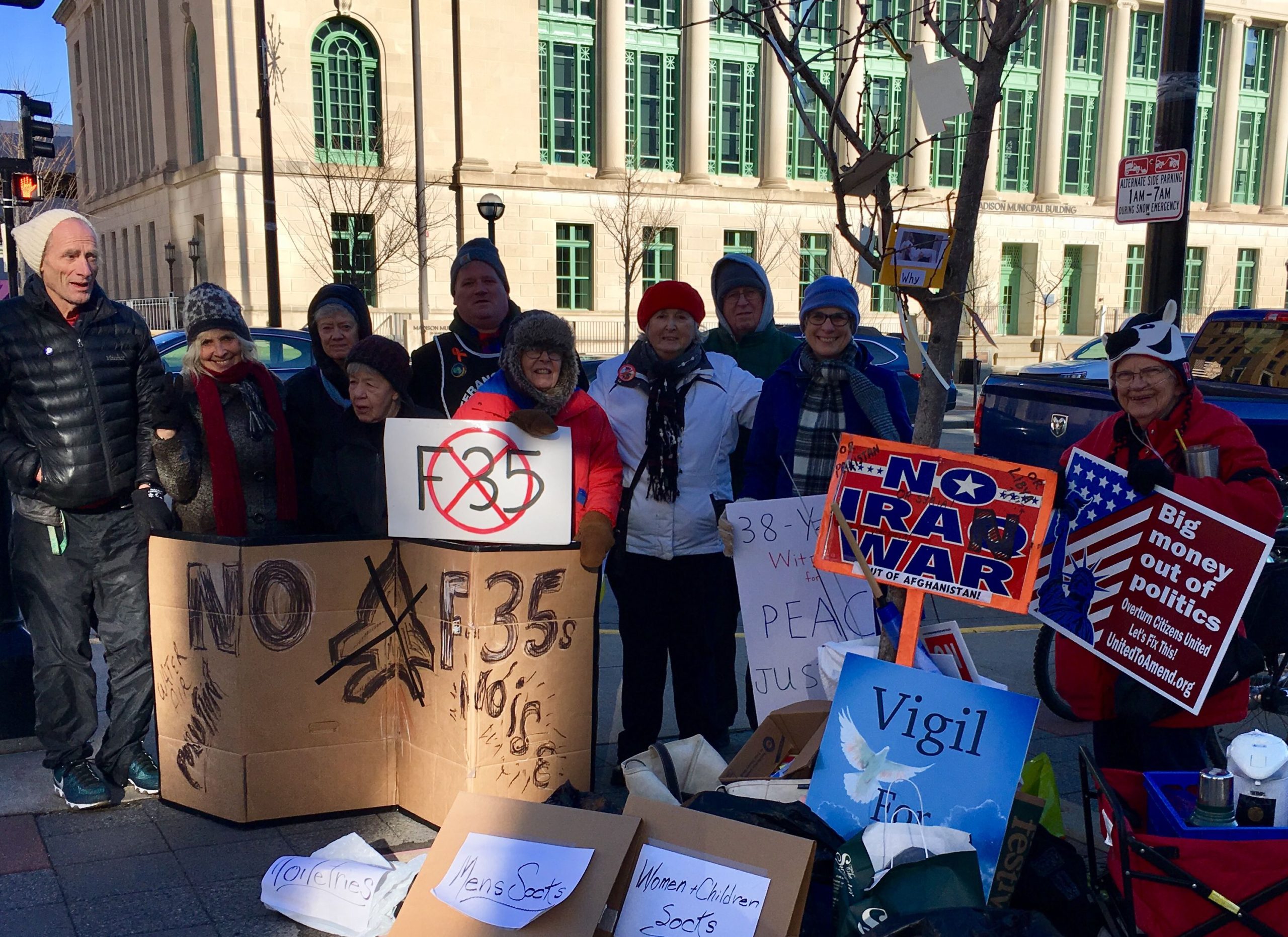PDF of document: Vigil for Peace WK 1652 12.02.2019
VIGIL FOR PEACE Mondays Noon-1P
Corner MLK Jr. Blvd. & Doty St. Madison City-Cty. Bldg.
WK 1652 12.02.2019 JOIN US!
The Vigil for Peace, on this first Monday of December, is celebrating thirty-eight years (1981-2019) of presence in the Downtown Madison public square speaking out as, “. . . We become, by our presence, a voice for justice.” FG
We remember our deceased vigilers: Charlotte S., Karin S., Lars P., Jackson T.
“I vigil for peace and for peaceful solutions to our climate emergency. I vigil because I believe 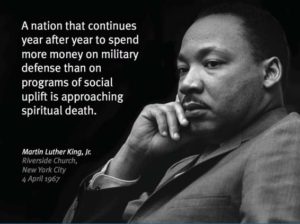 humanity must change and transcend its current military and economic culture in order to survive.” – Kathleen C.
humanity must change and transcend its current military and economic culture in order to survive.” – Kathleen C.
“I am a “newbie” at the Monday noon vigil. I have been participating for
almost two years. I “Vigil” as a witness standing in solidarity with the others who
are here. We share information about important social issues that need our
attention and action. We become, by our presence, a voice for justice. We offer
information in printed form to those who pass by and interact with those driving
vehicles inviting them to “honk for peace” and draw their attention to a witness
here on the corner of Doty and MLK Jr. Blvd. It is one of the ways I have to
“stand up and be counted.” – Frank G.
“It has been my privilege to be a participant at the Vigil for Peace for seven years now. Being timid by nature, I still feel a little uncomfortable standing there on the corner holding up a peace sign. Several factors keep me coming to the vigil most every Monday noon:
- It is one way I can respond, even in a small way, to the disturbing and seemingly persistent news about the violence, corruption, and destruction happening on our precious planet.
- It is heartwarming to hear the occasional “beeps for peace” from motorists as they drive by, or see them hold up their hand in a peace symbol. Also it’s rewarding to have pedestrians say “keep up the good work” or “thank you for being here” every week.
- I am inspired and encouraged by my fellow vigil participants who I consider to be stalwart peacemakers – models of hope and persistence and a faith that peace will dwell on our earth someday. I am proud to stand among them as an ongoing “presence for peace” on this corner made special by it’s proximity to the city, county and state seats of governance!” – Marge L.
“Why I vigil, whenever I have the opportunity: I stand with others with signs of protest and fliers of information to spread education about issues I care deeply about – war & peace, a healthy earth, and abolishing nuclear weapons. Vigiling is a way to draw myself away from everyday activities, to remind myself of dangers that could be averted if citizens come together in protest. A regular vigil is a place to meet my friends-in-peace, to share information, and feel that
I’m not alone with my feelings. It’s also a place to meet new passers-by and spread the ideas of peace and justice. Does it make a difference? It’s like throwing that pebble into the sea – you never know what wave it will create!” – Judy M.
“Here are some thoughts on peace, justice, sustainability: If you want peace, work for justice. Likewise, if you want justice, work for peace; peace and justice are intertwined. And as a matter of fact, if we don’t work for sustainability, the world may not be able to work for peace and justice…. Working for peace can begin with a simple smile, offered politely.
Working for sustainability can begin with thinking carefully about our lifestyles. Mindfulness in our daily affairs eases the path to peace, justice, and sustainability. Onward to peace and love, trees and flowers!”
– Larry O.
Vigiling for peace, justice and sustainability is for me an interpersonal means of educating myself and sharing information with others. It allows me to express an ever-deepening sense of injustice I have for a wounded humanity, and an earth desperately in need of healing. Our flier messages convey to the public the systematic exploitation of those who are marginalized by the obscene cost of U.S. wars and exploitative foreign policies when and where it suits our own national interests. The nuclear arsenal we finance, build and threaten to use is capable of killing millions of people at the press of a button. Corporate-profiteering through weapons
manufacturing, sales and systems of delivery blindly creates a viability-for-profit in every state of the Union.
Connections between militarism and environmental exploitative practices are culpable in threatening our very existence. This lack of moral courage to face reality is only outmaneuvered by our own looking the other way.
The late Rep. Elijah Cummings (1951-2019) said: “We are better than this.”
Neta Crawford reminds us that: “Local action is essential.”
Check out the video from Watson Institute for International and Public Affairs, Neta Crawford is a political scientist and the co-director of the Costs of War project:
Costs and Consequences of US Post-9/11 Wars: Focus on Climate Change
Together, we can all make a difference. We invite you to join us in seeking to make that difference.
– Mary Beth S.
National Priorities Project (NPP)
“The federal government found a way to spend $97 billion in a single month last year, of which more than $61 billion can be attributed to the Pentagon. It’s not a new phenomenon. In the last month of every fiscal year, federal agencies work to spend all that’s left in their annual budgets.
If they don’t, the agencies worry they’ll be appropriated a smaller share by Congress next year, hence the “use-it or lose-it” spending sprees…”
Some of the big ticket spending items are attributed to the usual major defense contractors. The Pentagon spent $8.1 billion on contracts with Lockheed Martin and $5.1 billion with Boeing in September, for instance.
The Pentagon wants to know how a border wall will improve troops’ ‘effectiveness’ before it contributes DoD dollars
Cost of National Security
US Budgetary Costs: $ 6.4 Trillion
Full Paper on Costs of War
“The vast economic impact of the wars in Afghanistan, Iraq, and Pakistan is poorly understood by the US public and policymakers. This paper estimates the budgetary costs of war, including past expenditures and obligations to care for veterans of these wars throughout their lifetimes.”
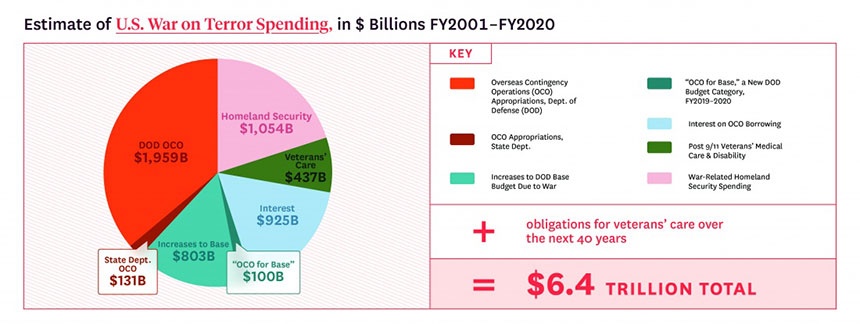
Since late 2001, the United States has appropriated and is obligated to spend an estimated $6.4 Trillion through Fiscal Year 2020 in budgetary costs related to and caused by the post-9/11 wars—an estimated $5.4 Trillion in appropriations in current dollars and an additional minimum of $1 Trillion for US obligations to care for the veterans of these wars through the next several decades.
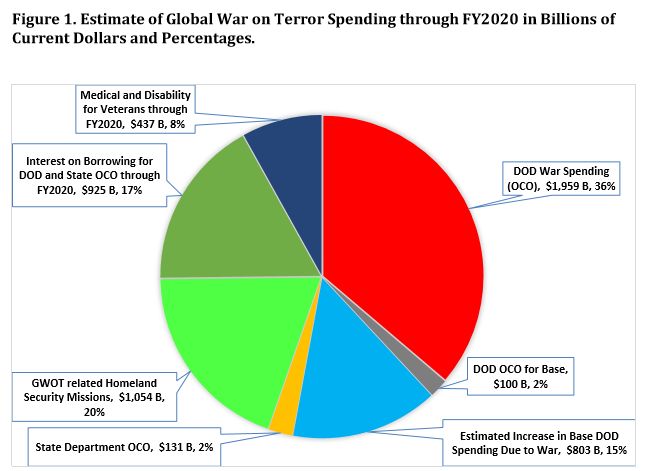
“One of the major purposes of the Costs of War Project has been to clarify the types of budgetary costs of the US post-9/11 wars, how that spending is funded, and the long-term implications of past and current spending. This estimate of the US budgetary costs of the post-9/11 wars is a comprehensive accounting intended to provide a sense of the consequences of the wars for the federal budget. Since the 9/11 attacks, the Department of Defense appropriations related to the Global War on Terror have been treated as emergency appropriations, now called Overseas Contingency Operations (OCO).3 When accounting for total war costs, the Department of Defense and other entities often present only Overseas Contingency Operation appropriations.”
National Priorities Project: Cost of National Security

Dear Vigilers,
We were ten strong at the vigil yesterday, and five strong “with-us-in-spirit.” Pretty good for a mostly unorganized, pop-up peace vigil. It was a beautiful bright sunny day, but boy, was it cold!
Nonetheless, we were warm-in-heart-and-spirit. I came by about two hours later and there were our beautiful Tibetan Peace Flags hung in the three Ginkgo trees still fluttering in the wind. People were walking be them like it was the most natural thing in the world. Maybe it was? What a great idea, Christina, to pass them out to passersby, too. We even got to pass one out to our old vigiler friend, Todd M. It surprised me at how amenable people were to taking them right along with the flier.
We had a nice assortment of their favorite signs people brought with them—oldies-but-goodies!
And we used my niece, Jamie’s, little red wagon (to which Christina sang the little red wagon song) for a stand-in table in which we served gingerbread boy cookies and hot Turmeric Ginger Buddha tea to complement our peace flags and cookies. (According to the tea label, “Good if you have a medical condition.” Our only ‘medical condition’ may be that we are ‘sick’ of war!) The only thing we missed was music—maybe next year?
We closed with our usual announcements, see: (
www.safeskiescleanwaterwi.org,and
Dona Nobis Pacem which Martina kicked off for us. We then dispersed to the four winds to spread our spirit-filled peaceful actions to the whole earth (Well, to Madison, anyway.) just like our Tibetan Peace Flags’ messages joyfully bore their fruit across Downtown Madison and beyond.

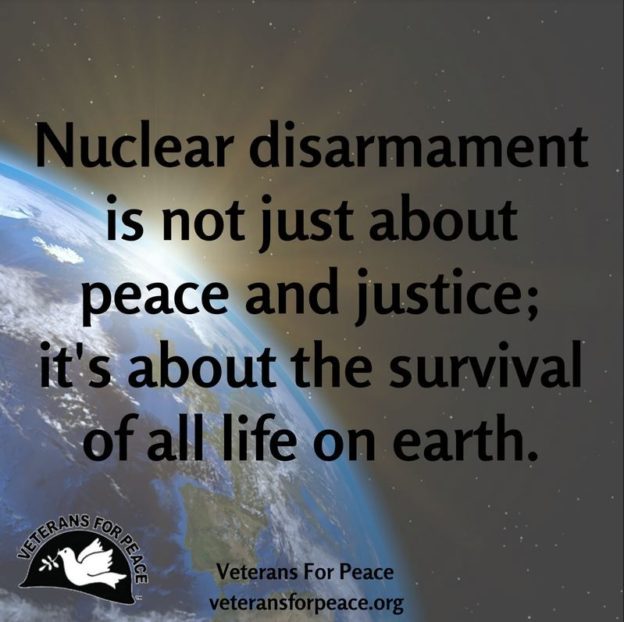

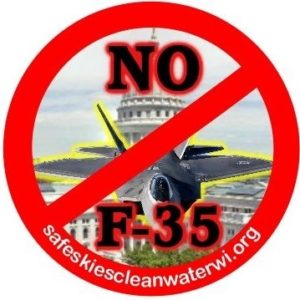
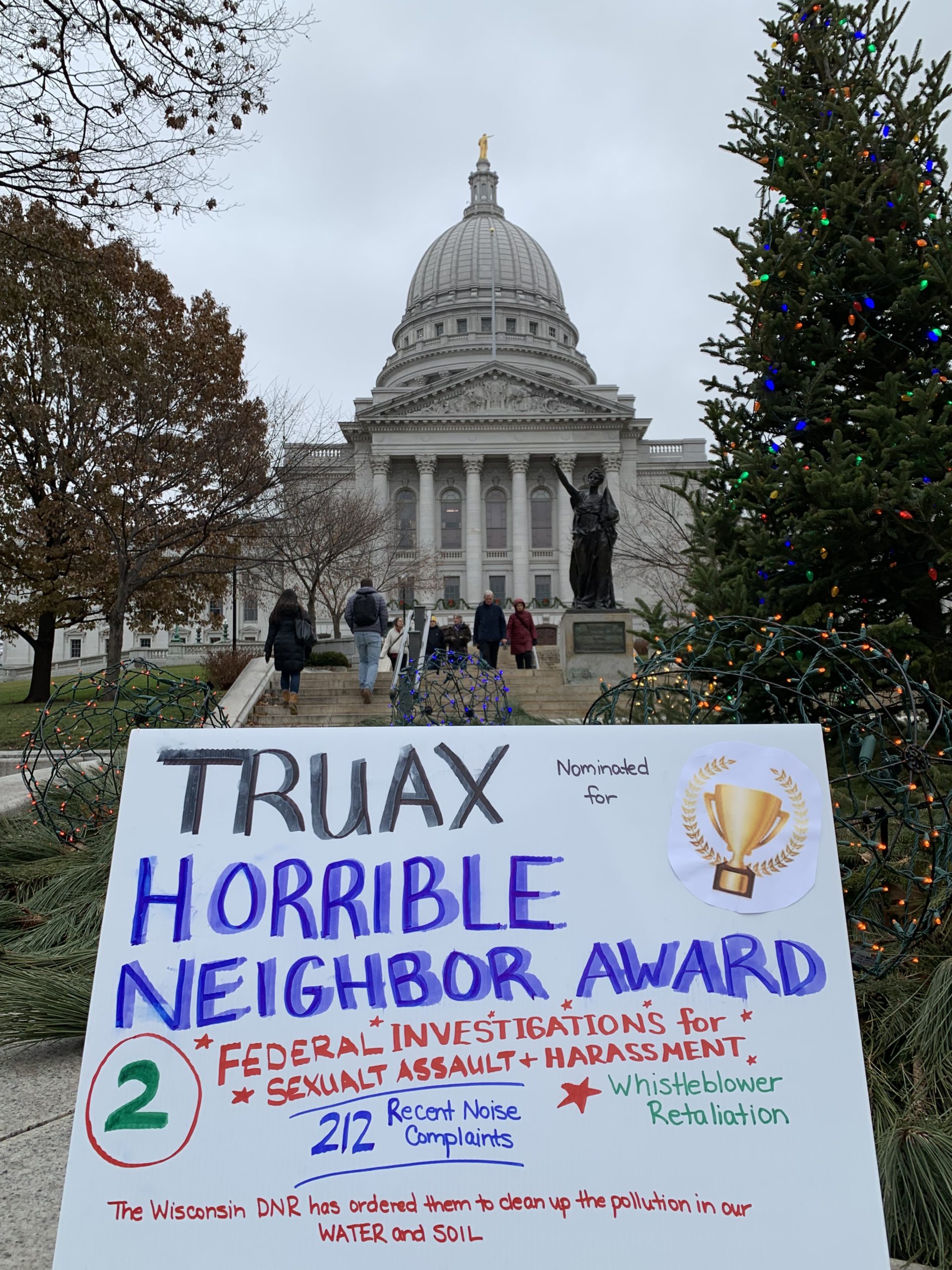



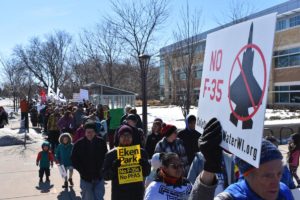
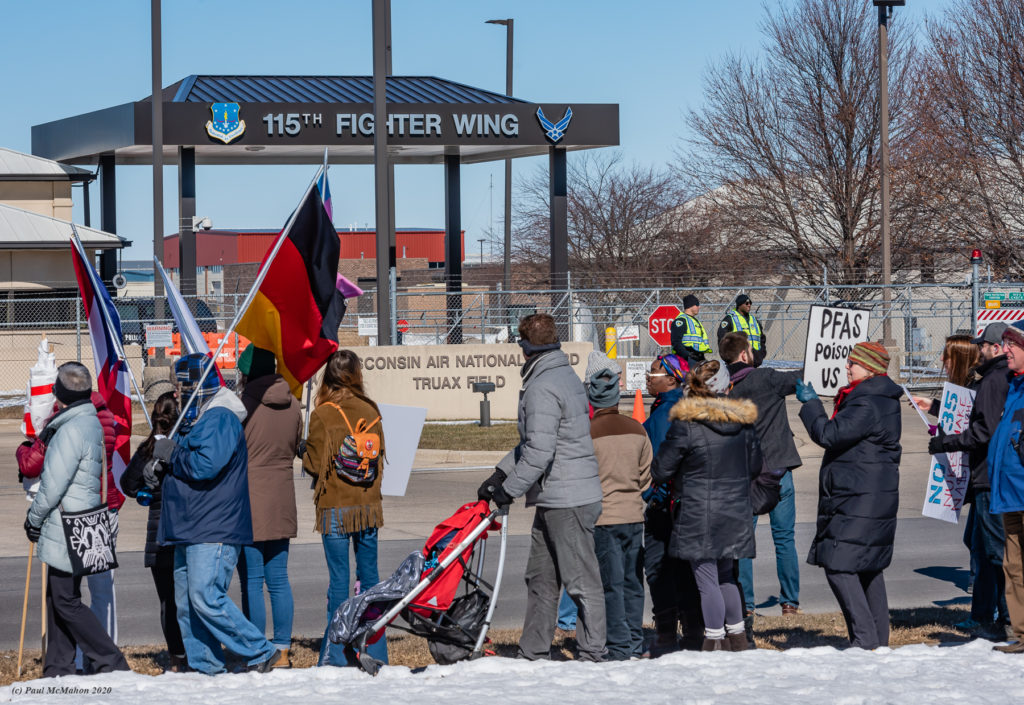
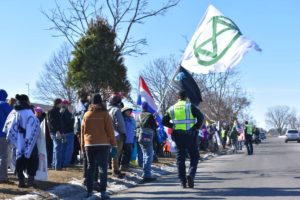



 humanity must change and transcend its current military and econom
humanity must change and transcend its current military and econom


